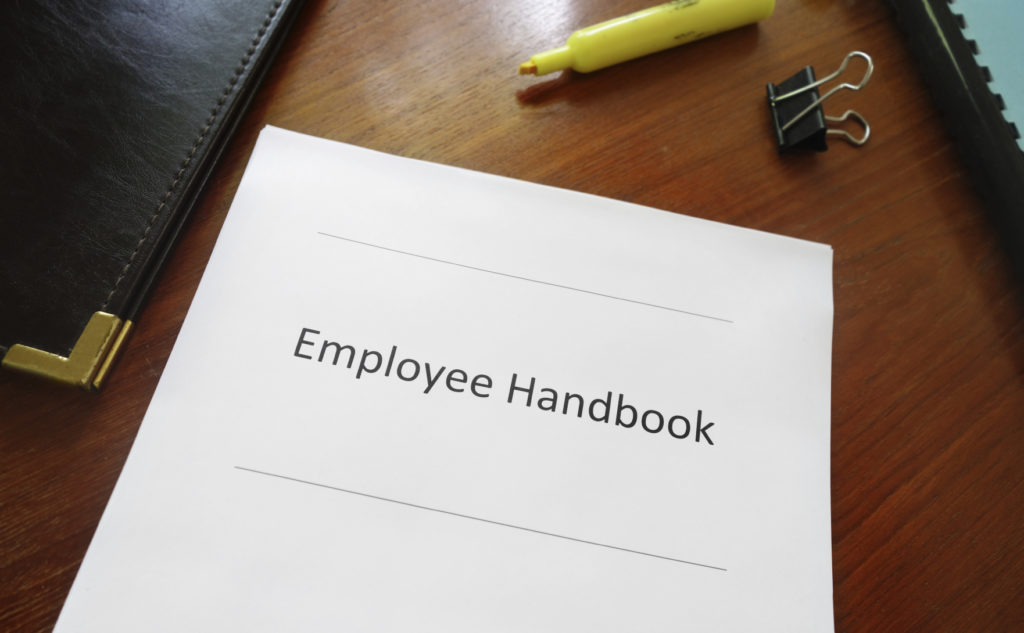In recent years, job satisfaction has become a hot topic at many companies who are looking to not only recruit the best talent but keep the employees they already have. As the tech industry continues to expand at a tremendous rate, the competition to retain quality staff members has risen significantly. Because of this, many organizations are hiring life and business coaches to come in and work with their executive management team to create a high-performance culture. The goal is not only to find ways to motivate employees but to also create a company culture that staff members can get excited about. One way some companies do this is by creating employee handbooks.
“Misunderstandings and poor communication are one of the main causes of interoffice conflict. If you want to ensure that everyone is on the same page, then everyone must be clear about what is expected of them. And the best way to do this is by creating an employee handbook,” says Lisa Johnson, an online life coach from the Coaching Institute. “We work with many organizations who are dedicated to creating a work environment that fosters growth and goodwill, and every time we instate a high-quality employee handbook, we immediately see productivity and job satisfaction increase.”
Creating Clarity In The Workplace

Img source: viewsonic.com
The idea of having a formal employee handbook can seem a little overboard, especially for small companies where the personnel list is only the owner/operator and a few helpers. One may not think it is essential to write all of the rules down when the small family of workers is already so well-versed on how the business operates. Unfortunately, however, in today’s litigious society, the employee handbook could be the very instrument that prevents miscommunication or disagreements from occurring in even the friendliest of organizations.
An employee handbook doesn’t have to be lengthy, perhaps including only the most basic information, and can be written in such a way that it is non-threatening to the worker. For the manager/owner who wants to use an employee handbook to his/her advantage, the document should probably contain the following sections, as a minimum.
7 Factors Of A Good Employee Handbook

Img source: scemployersblog.com
1. Description of the Business – The employee handbook should begin with a short section about the business, the basics of its operation, and the owner’s vision of both short term and long term goals. A brief history of how the company was formed may help provide some insight, especially to employees that may be new to the organization and/or the area.
2. Established Work Hours/Schedules – The useful employee handbook should also contain a section that identifies what the regular workdays and hours are, the duration and timing of any break periods, if call-ins for extra hours or extra days are frequent, and if there is any flexibility to the schedule. This section should never take away any of the Management’s authority to re-arrange work times whenever it is required, such as in the case of working around weather problems, or work-load issues, and a statement claiming this privilege should be included. However, most employees will want to understand what the normal hours are, in order to plan activities for their own free time.

Img source: seanhopwood.com
3. Compensation – A section of the employee handbook should have some explanation about how pay scales are established and what evaluation methods are used to adjust those pay rates. Unless the owner prefers to do so, this section does not need to include actual dollar values. Many companies discourage the open discussion of salaries or hourly rates, as a method of protecting the privacy of the individual employees.
4. Benefits – The worker should be able to find in the employee handbook the list of benefits that are offered by the company. The information could describe, for example, specific details about the health insurance carrier, limits of coverage, etc. If paid sick days are part of the employee’s benefits package, the set number of days should be stated. Make any statement regarding management’s flexibility to extend this number in special circumstances, including hospital stays, etc. The number of vacation days should also be stated, along with any established progressive increases that accompany years of service, etc. Describe any policies allowing the carry-over of unused vacation days or sick leave from one calendar year to the next. Provide any information about retirement benefits, such as contributions to a 401K plan, stock offerings, etc.

Img source: workplacegroup.com
5. Company Policies – The employee handbook is an excellent place to make sure each worker understands established company policies. Even if your company has not had an opportunity to encounter specific problematic issues, it may be important to for everyone to know what will happen, for example, if an employee is found abusing the use of drugs or alcohol, if their social behavior reflects poorly upon the company’s reputation, or if they are mistreating your company’s customers in any way. The employee handbook should clearly define the company’s policies regarding sexual harassment or racial discrimination within the workplace, whether smoking is allowed, what safety measures are to be strictly enforced, and what company information is to be kept proprietary.
6. Absenteeism – Another item that could be addressed in the employee handbook is the subject of absenteeism. While this topic might have been discussed somewhat in other sections, such as that for work schedules and compensation, the owner has an excellent opportunity to reinforce the need for a worker to be absent only when it is necessary. The productivity of a small business can be directly related to the inclination of its workers to show up each workday.

Img source: mente.co.uk
7. Disclaimers – While it is the main purpose of the employee handbook to establish a clear line of communication, company management should avoid the possibility that the workers perceive the handbook as an actual contract. As an owner and/or manager of a small company, you should specifically state in the employee handbook that it is intended to be a basic information and policy guide for the workers and that an actual contract would be offered as a separate document with the appropriate legal signatures. The handbook should also state that the company reserves the right to terminate an employee for reasons that are not necessarily included in the handbook when circumstances require such action.
Keep in mind as an owner/manager that your fair administration of the policies and rules written in the employee handbook will be watched quite carefully by the staff of workers. This shouldn’t be too alarming, however, as employees tend to notice how fair or unfair things are, whether there is a written handbook or not. With an employee handbook available to each worker, at least the same information is being distributed to everyone in the company.




